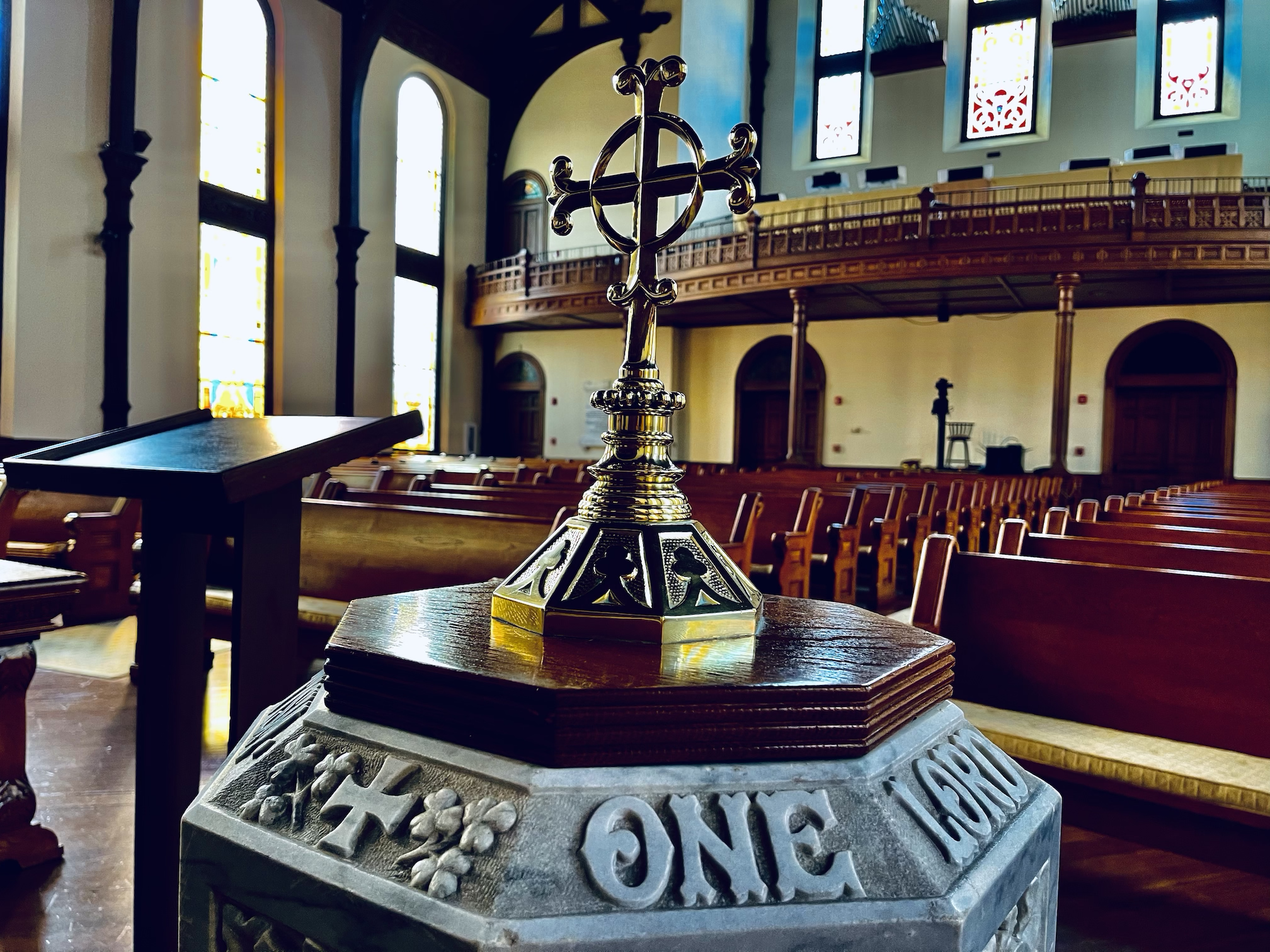Living into Baptism
written by: Frank Etheridge
I was so moved by the baptism of our entire congregation during a January worship service that I felt its healing, transformative power deep down inside my soul.
Baptismal Font of First Presbyterian Church
And I was so surprised when Rev. Danny Dieth and Rev. Connie Happell began blessing all of us at First Presbyterian Church through God’s gift of baptism — something I’d never before experienced (or, I’ll confess, at least never before noticed) in countless Sunday services — that I simply had to know more about this ritual and its meaning. Curiosity led me to ask Danny to explain, which he graciously agreed to do over coffee one morning at Iron Bank.
Danny explained to me that it was called the Reaffirmation of Baptismal Vows, something all Presbyterian U.S.A. churches are invited to perform every January. Its annual timing is instructed by The Book of Common Worship, adopted in 1906 to uniformly spell out our denomination’s liturgical traditions and how to deliver them during worship services. It comes in January, after Christmas and before Lent, during the Epiphany season, a time when we are called to grow in our understanding of the Lord.
Saying that most of us don’t remember our own baptism typically done as newborn babies, Danny explained of its Reaffirmation: “It’s our way to say “thank you” for the outer salvation and the inner faith that baptism gives us. It’s our way to experience faith.”
Dedicating us to the “lifelong joy and challenge of living in Christ,” baptism is one of two sacraments in Presbyterian doctrine, the other being communion. Simply put, Danny told me, a sacrament is something that Jesus did that we are in turn commanded to do. This comes in the last few verses in the Book of Matthew ( Chapter 28, Verses 18-20) and Jesus instructions to his disciples are to go forth and “teach all nations, baptizing them in the name of the Father, and of the Son, and of the Holy Ghost.”
Rooted in the Jewish tradition of ritual cleansing before temple, baptism is done in all Christian denominations. One thing to distinguishes Presbyterian baptisms is that we it is a community event. That’s why we don’t have designated godparents; rather, the entire congregation vows to take care of the baptized child before them. “It acknowledges that we can’t do it on our own,” Danny says of raising the child in Christian faith. “We have to have our church family help do it.”
The question of sprinkling vs. immersion in delivering the cleansing water to those being baptized is up to the congregation to answer. Jesus was immersed in the Jordan River by John. However, Danny points out, for the first 300 years of Christianity, believers were persecuted. They couldn’t go to the river and perform the sacrament in public. Thus, baptismal water was sprinkled inside house churches.
“We could go do it in the Chattahoochee River in the afternoon,” he says of FPC baptisms, “as long as we met the requirement that the entire church family was invited and attended in adequate numbers.”
Presbyterians are also unique in that we believe we only need to be baptized once and in that we honor baptisms by other congregations. Our vows are taken “on behalf of believers everywhere.”
“Like communion,” Danny surmises of the sacrament of baptism, “it is symbolic. It symbolizes the old life going out and new life rushing up in Christ.”
